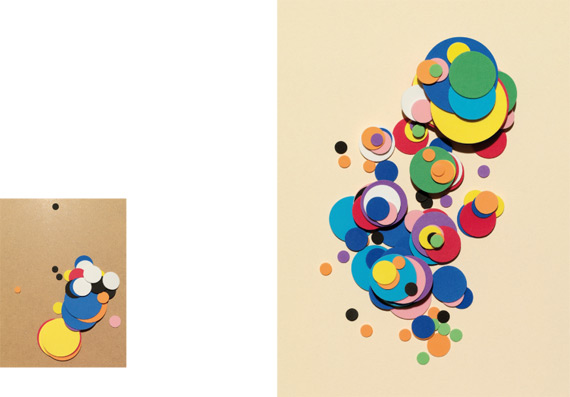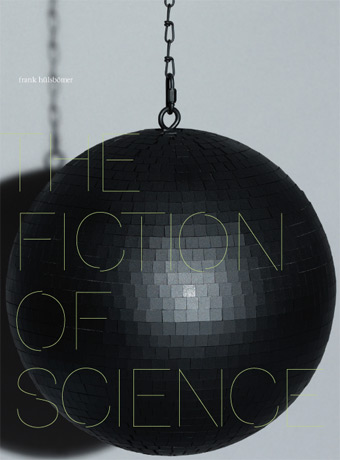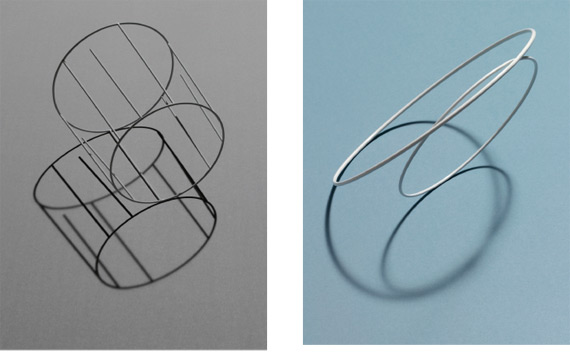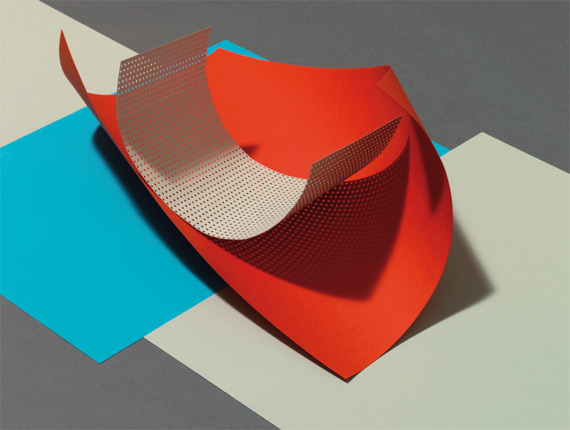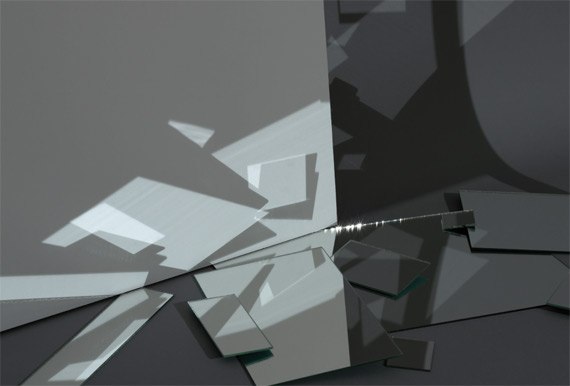Κονστρουκτιβισμός Από τη Βικιπαίδεια, την ελεύθερη εγκυκλοπαίδεια
Ο Κονστρουκτιβισμός (Constructivism) αποτελεί καλλιτεχνικό ρεύμα, κυρίως στη ζωγραφική και τη γλυπτική, που αναπτύχθηκε την περίοδο 1913-1930 στη Ρωσία. Θεμελιωτής του κινήματος θεωρείται ο Ρώσος καλλιτέχνης Βλαντιμίρ Τάτλιν (Vladimir Tatlin). Ως πρόδρομοι του Ρωσικού κονστρουκτιβισμού αναφέρονται πολλές φορές τα κινήματα του Φουτουρισμού και του Κυβισμού, με τα οποία είναι γεγονός πως ήρθε σε επαφή και ο Τάτλιν στο Παρίσι. Το κίνημα του κονστρουκτιβισμού συνδέθηκε όμως επίσης με τη σχολή του Μπαουχάους στη Γερμανία καθώς και με τον Νεοπλαστικισμό. Η καλλιτεχνική πρωτοπορία του Τάτλιν ένωσε και άλλους Ρώσους καλλιτέχνες, μεταξύ των οποίων και οι γλύπτες Antoine Pevsner και Naum Gabo. Η πρώτη αυτή ομάδα δημοσίευσε και το Μανιφέστο της το 1920 (ή 1921). Θεωρείται ότι μέσα από αυτό το μανιφέστο γεννήθηκε και ο όρος -κονστρουκτιβισμός (αγγ. construct, ελλ. μφ. κατασκευάζω) καθώς μία από τις διακηρύξεις του κινήματος ήταν πως η τέχνη "κατασκευάζεται".
Ένα από τα συνθήματα του ήταν επίσης το "Η Τέχνη στη Ζωή".Κύριο χαρακτηριστικό του κινήματος του κονστρουκτιβισμού αποτελούν οι απολύτως αφηρημένες κατασκευές. Απουσιάζουν οι συμβατικές αναπαραστάσεις αντικειμένων ενώ δίνεται έμφαση στην απεικόνιση γεωμετρικών μορφών. Η απόδοση των θεμάτων είναι τις περισσότερες φορές ακραιφνώς μινιμαλιστική και συχνά με διάθεση πειραματισμού. Οι κονστρουκτιβιστές θαύμαζαν τις μηχανές και την τεχνολογία της εποχής σε βαθμό που χρησιμοποιούσαν πολλά βιομηχανικά υλικά (πλαστικό, γυαλί ή σίδερο) στην κατασκευή των έργων τους. Ο κονστρουκτιβισμός συνδέθηκε στενά και με την αρχιτεκτονική.Αρχικά το σοβιετικό καθεστώς είχε θετική στάση απέναντι στο κίνημα, ωστόσο μετά την δημοσίευση του μανιφέστου εναντιώθηκε σε αυτό με αποτέλεσμα τη σταδιακή φθορά του. Πολλοί εκπρόσωποι του αναγκάστηκαν για αυτό το λόγο να εγκαταλείψουν τη Ρωσία.Το κίνημα θεωρείται διεθνές, καθώς πέρα από τη Ρωσία εξαπλώθηκε και σε χώρες όπως η Γερμανία και η Ολλανδία.
Βασικοί εκπρόσωποι Σημαντικοί εκπρόσωποι του κονστρουκτιβισμού θεωρούνται οι:
* Vladimir Tatlin
* Kasimir Malevich
* Alexandra Exter
* Robert Adams
* Gustav Klutsis
* El Lissitzky
* Vadim Meller
* Alexander Rodchenko
* Liubov Popova
* Olga Rozanova
* Naum Gabo
* Varvara Stepanova
* Alexander VesninConstructivism (art)
From Wikipedia, the free encyclopedia
Constructivism was an artistic and architectural movement that originated in Russia from 1919 onward which rejected the idea of "art for art's sake" in favour of art as a practice directed towards social purposes. Constructivism as an active force lasted until around 1934, having a great deal of effect on developments in the art of the Weimar Republic and elsewhere, before being replaced by Socialist Realism. Its motifs have sporadically recurred in other art movements since.
Beginnings
The term Construction Art was first used as a derisive term by Kazimir Malevich to describe the work of Alexander Rodchenko in 1917. Constructivism first appears as a positive term in Naum Gabo's Realistic Manifesto of 1920. Alexei Gan used the word as the title of his book Constructivism, which was printed in 1922.[1] Constructivism was a post-World War I outgrowth of Russian Futurism, and particularly of the 'corner-counter reliefs' of Vladimir Tatlin, which had been exhibited in 1915. The term itself would be coined by the sculptors Antoine Pevsner and Naum Gabo, who developed an industrial, angular approach to their work, while its geometric abstraction owed something to the Suprematism of Kasimir Malevich. The teaching basis for the new movement was laid by The Commissariat of Enlightenment (or Narkompros) the Bolshevik government's cultural and educational ministry headed by Anatoliy Vasilievich Lunacharsky who suppressed the old Petrograd Academy of Fine Arts and the Moscow School of Painting, Sculpture and Architecture in 1918. IZO, the Commissariat's artistic bureau was run during the Russian Civil War mainly by Futurists, who published the journal Art of the Commune. The focus for Constructivism in Moscow was VKhUTEMAS, the school for art and design established in 1919. Gabo later stated that teaching at the school was focused more on political and ideological discussion than art-making. Despite this, Gabo himself designed a radio transmitter in 1920 (and would submit a design to the Palace of the Soviets competition in 1930).
Constructivism as theory and practice derived itself from a series of debates at INKhUK (Institute of Artistic Culture) in Moscow, from 1920-22. After deposing its first chairman, Wassily Kandinsky for his 'mysticism', The First Working Group of Constructivists (including Liubov Popova, Alexander Vesnin, Rodchenko, Varvara Stepanova, and the theorists Alexei Gan, Boris Arvatov and Osip Brik) would arrive at a definition of Constructivism as the combination of faktura: the particular material properties of the object, and tektonika, its spatial presence. Initially the Constructivists worked on three-dimensional constructions as a first step to participation in industry: the OBMOKhU (Society of Young Artists) exhibition showed these three dimensional compositions, by Rodchenko, Stepanova, Karl Ioganson and the Stenberg Brothers. Later the definition would be extended to designs for two-dimensional works such as books or posters, with montage and factography becoming important concepts.
Photography and Photomontagehttp://en.wikipedia.org/wiki/Constructivism_(art)#Photography_and_PhotomontageThe Constructivists were early pioneers of the techniques of photomontage. Gustav Klutsis' 'Dynamic City' and 'Lenin and Electrification' (1919-20) are the first examples of this method of montage, which had in common with Dadaism the collaging together of news photographs and painted sections. However Constructivist montages would be less 'destructive' than in Dada. Perhaps the most famous of these montages was Rodchenko's illustrations to the Mayakovsky poem About This.
LEF also helped popularise a distinctive style of photography, involving jagged angles and contrasts and an abstract use of light, which paralleled the work of Laszlo Moholy-Nagy in Germany: the leading lights of this included, along with Rodchenko, Boris Ignatovich and Max Penson, among others. This also shared many characteristics with the early documentary movement. Meanwhile LEF produced an architectural offshoot, the OSA group led by Alexander Vesnin and Moisei Ginzburg - for more information see Constructivist architecture.
http://en.wikipedia.org/wiki/Alexander_RodchenkoAleksander Mikhailovich Rodchenko(23 November] 1891 – December 3, 1956)
was a Russian artist, sculptor, photographer and graphic designer. He was one of the founders of constructivism and Russian design; he was married to the artist Varvara Stepanova.
Rodchenko was one of the most versatile Constructivist and Productivist artists to emerge after the Russian Revolution. He worked as a painter and graphic designer before turning to photomontage and photography. His photography was socially engaged, formally innovative, and opposed to a painterly aesthetic. Concerned with the need for analytical-documentary photo series, he often shot his subjects from odd angles—usually high above or below—to shock the viewer and to postpone recognition. He wrote: "One has to take several different shots of a subject, from different points of view and in different situations, as if one examined it in the round rather than looked through the same key-hole again and again."
Life and career
Rodchenko was born in St. Petersburg to a working class family. His family moved to Kazan in 1909, after the death of his father[1] at which point he studied at the Kazan School of Art under Nikolai Feshin and Georgii Medvedev, and at the Stroganov Institute in Moscow. He made his first abstract drawings, influenced by the Suprematism of Kazimir Malevich, in 1915. The following year, he participated in "The Store" exhibition organized by Vladimir Tatlin, who was another formative influence in his development as an artist.
Rodchenko was appointed Director of the Museum Bureau and Purchasing Fund by the Bolshevik Government in 1920. He was responsible for the reorganization of art schools and museums. He taught from 1920 to 1930 at the Higher Technical-Artistic Studios (VKhUTEMAS/VKhUTEIN).
In 1921 he became a member of the Productivist group, which advocated the incorporation of art into everyday life. He gave up painting in order to concentrate on graphic design for posters, books, and films. He was deeply influenced by the ideas and practice of the filmmaker Dziga Vertov, with whom he worked intensively in 1922.
Impressed by the photomontage of the German Dadaists, Rodchenko began his own experiments in the medium, first employing found images in 1923, and from 1924 on shooting his own photographs as well. His first published photomontage illustrated Mayakovsky's poem, "About This," in 1923.
From 1923 to 1928 Rodchenko collaborated closely with Mayakovsky (of whom he took several striking portraits) on the design and layout of LEF and Novy LEF, the publications of Constructivist artists. Many of his photographs appeared in or were used as covers for these journals. His images eliminated unnecessary detail, emphasized dynamic diagonal composition, and were concerned with the placement and movement of objects in space.
Throughout the 1920s Rodchenko's work was abstract often to the point of being non-figurative. In the 1930s, with the changing Party guidelines governing artistic practice, he concentrated on sports photography and images of parades and other choreographed movements.
Rodchenko joined the October circle of artists in 1928 but was expelled three years later being charged with "formalism." He returned to painting in the late 1930s, stopped photographing in 1942, and produced abstract expressionist works in the 1940s. He continued to organize photography exhibitions for the government during these years. He died in Moscow in 1956.
1920s. Rodchenko and Stepanova
Influence
Much of the work of 20th century graphic designers is a direct result of Rodchenko's earlier work in the field. His influence has been pervasive enough that it would be nearly impossible to single out all of the designers whose work he's influenced.
His 1924 portrait of Lilya Brik has inspired a number of subsequent works, including the cover art for a number of music albums. Among them are influential Dutch punk band The Ex, which published a series of 7" vinyl albums, each with a variation on the Lilya Brik portrait theme, and the cover of the Franz Ferdinand album, You Could Have It So Much Better. The poster for One-Sixth Part of the World was the basis for the cover of "Take Me Out", also by Franz Ferdinand.
The end of painting
In 1921, Russian avant-garde artist Alexander Rodchenko executed what were arguably the first true monochromes (artworks of one color), and proclaimed "I reduced painting to its logical conclusion and exhibited three canvases: red, blue, and yellow. I affirmed: this is the end of painting." These paintings were first displayed in the 5x5=25 exhibition in Moscow. For artists of the Russian Revolution, Rodchenko's radical action was full of utopian possibility. It marked the end of easel painting – perhaps even the end of art – along with the end of bourgeois norms and practices. It cleared the way for the beginning of a new Russian life, a new mode of production, a new culture.
It is through the repetition by contemporary artists of Rodchenko's gesture that the monochrome's extreme nature can be fully analyzed and made meaningful. Whether represented by paintings, drawings, prints, or sculpture, the contemporary artists in the exhibition stop short of making pure monochromes, thereby flirting with its concepts. They creatively repeat, vary, differentiate, and hold in productive tension its contradictory poles: both the death of art and its resuscitation.[2]
http://en.wikipedia.org/wiki/Max_PensonMax Penson (1893-1959) was a noted Jewish Belarusian photojournalist and photographer of the Soviet Union noted for his photographs of Uzbekistan. His photographs documented the economic transformation of Uzbekistan from a highly traditional feudal society into a modern Soviet republic between 1920 and 1940.
Biography
He was born into a poor bookbinders family in 1893 in the small town of Velizh in present day Smolensk Oblast, Russia. He soon moved to Vilno where he enrolled in the art school of S. N. Yuzhanin. In 1914, he was forced as a Jew to move with his family to Kokand in Turkestan.[1]
After the 1917 Russian Revolution he founded an art school in Kokand under administration of the Kokand Revolutinary Committee.[2] He became the director and taught draftsmanship to 350 Uzbek children studying at the school. In 1921 his life changed dramatically when he obtained a camera. He would go on to become one of Uzbekistan's and indeed the Soviet Union's prominent professional photographers in the period 1920-1940, capturing its people and economic progression and made over 30,000 photographs by 1940.[2]
He moved to the Uzbek capital of Tashkent and from 1926 through to 1949 worked for the largest newspaper in Central Asia, the Pravda Vostoka (Truth of the East). During the 1930s he was particularly prolific in capturing the public engineering works in Uzbekistan and the industrialization of the cotton trade in the country. Penson's images were widely circulated by the Soviet news agency TASS and in 1933 his photographs featured in an extensive volume exploring economic progression in the Soviet Union entitled, USSR: Under Construction.
In 1937 Penson participated in the World Exhibition in Paris winning the Grand Prix Award for Uzbek Madonna, a portrait of a young Uzbek woman, publicly nursing her child.[1]In 1939 he photographed the construction of the Grand Fergana Canal. In 1940 Penson met Sergei Eisenstein who said of him:
“ "There cannot be many masters left who choose a specific terrain for their work, dedicate themselves completely to and make it an intergrated part of their personal destiny. It is, for instance, virtually impossible to speak about the city of Ferghana without mentioning the omnipresent Penson who travelled all over Uzbekistan with his camera. His unparalleled photo archives contain material that enables us to trace a period in the republic's history, year by year and page by page".[1] ”
Decline and death
In 1948 the increase in anti-Semitism under pressure by Joseph Stalin forced Penson to leave his 25 year long position with the Pravda Vostoka. He died in 1959 after a long period of depression and illness.[2]
Legacy
A great number of Penson's works are housed in the Moscow House of Photography. In 2006 Russian billionaire Roman Abramovich sponsored an exhibition of Benson's photographs of Uzbekistan in agreement with the Moscow House of Photography on 29 November 2006 at the Gilbert Collection at Somerset House in London. Abramovich had previously funded the exhibition "Quiet Resistance: Russian Pictorial Photography 1900s-1930s" at the same gallery in 2005, also organised by the Moscow House of Photography.[3]
http://en.wikipedia.org/wiki/Gustav_KlutsisGustav Klutsis (b. January 4, 1895, Ķoņi parish near Rūjiena, Latvia – d. February 26, 1938 in Moscow)
was a pioneering photographer and major member of the Constructivist avant-garde in the early 20th century. He is known for the Soviet revolutionary and Stalinist propaganda he produced with his wife and collaborator Valentina Kulagina.
Biography
Klucis began his artistic training in Riga in 1912. In 1915 he was drafted into the Russian Army, serving in a Latvian riflemen detachment, then came to Moscow in 1918. In the next three years he began art studies under Malevich and Antoine Pevsner, joined the Communist Party, met and married his longtime collaborator Valentina Kulagina, and graduated from the state-run art school VKhUTEMAS. He would continue to be associated with VKhUTEMAS as a professor of color theory from 1924 until the school closed in 1930.
Klucis taught, wrote, and produced political art for the Soviet state for the rest of his life. As the political background degraded through the 1920s and 1930s, Klucis and Kulagina came under increasing pressure to limit their subject matter and techniques. Once joyful, revolutionary and utopian, by 1935 their art was devoted to furthering Stalin's cult of personality.
Despite his active and loyal service to the party, Klucis was arrested in Moscow on January 17, 1938, as he prepared to leave for the New York World's Fair. Kulagina agonized for months, then years, over his disappearance. In 1989 it was found that he had been executed by Stalin's order three weeks after the arrest.
Work
Klucis worked in a variety of experimental media. He liked to use propaganda as a sign or revolutionary background image. His first project of note, in 1922, was a series of semi-portable multimedia agitprop kiosks to be installed on the streets of Moscow, integrating "radio-orators", film screens, and newsprint displays, all to celebrate the fifth anniversary of the Revolution. Like other Constructivists he worked in sculpture, produced exhibition installations, illustrations and ephemera.
But Klucis and Kulagina are primarily known for their photo montages. The names of some of their best posters, like "Electrification of the whole country" (1920), "There can be no revolutionary movement without a revolutionary theory" (1927), and "Field shock workers into the fight for the socialist reconstruction" (1932), are as dated and stuffy as the images are fresh, powerful, and sometimes eerie. For economy they often posed for, and inserted themselves into, these images, disguised as shock workers or peasants. Their dynamic compositions, distortions of scale and space, angled viewpoints and colliding perspectives make them perpetually modern. In the later work the presence of Stalin, accepting the applause of a cut-and-paste cross-section of Soviet society, resonates with the falsity of Stalin's myth.
Klucis is one of four artists with a claim to having invented the sub-genre of political photo montage in 1918 (along with the German Dadaists Hannah Höch and Raoul Hausmann, and the Russian El Lissitzky).













